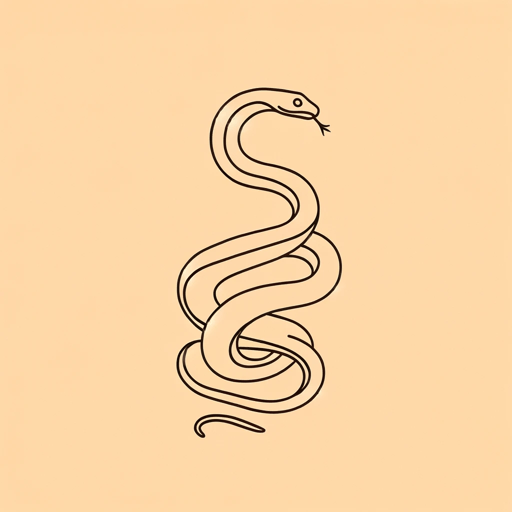44 pages • 1 hour read
Arthur Conan DoyleThe Sign of the Four
Fiction | Novel | Adult | Published in 1890A modern alternative to SparkNotes and CliffsNotes, SuperSummary offers high-quality Study Guides with detailed chapter summaries and analysis of major themes, characters, and more.
Summary and Study Guide
Overview
The Sign of Four is the second Sherlock Holmes novel by famed British author Sir Arthur Conan Doyle. First published in February 1890 in the popular literary magazine Lippincott’s under the title “The Sign of the Four; or the Problem of the Sholtos,” its title was shortened to The Sign of Four when it was published in book format in October 1890. The Sign of Four has been adapted many times for the stage, radio, film, and television.
Following the publication of the first Sherlock Holmes novel, A Study in Scarlet, in 1887, The Sign of Four features another complex case for Sherlock Holmes and his second major adventure with John Watson. It includes several of Sherlock Holmes’s more famous lines of dialogue, as well as John Watson’s romance with Mary Morstan. With a plot centered around events in British-occupied India, the novel also engages with themes of British imperialism, greed, and fear of the other.
This study guide uses the 2006 paperback edition published by Headline Review.
Content Warning: This guide and the original text contain outdated and offensive language indicative of the racist attitudes of the late Victorian period. This guide also contains several references to recreational drug use.
Plot Summary
In their shared flat at 221B Baker Street, John Watson watches Sherlock Holmes use cocaine. Watson lectures Holmes about the dangers of the drug, but Holmes disregards him, explaining that he would not need the drug if he had a case to occupy him instead. Then a young woman named Mary Morstan arrives to seek Holmes’s expertise.
Mary explains that 10 years ago, her father, a captain of the guard at a penal colony in the Andaman Islands (off the coast of India), disappeared. She searched for him and contacted his friend and fellow retired soldier, Major Sholto, who said he had not seen him. Four years later, she began receiving anonymous gifts of a single pearl, once a year for six years. Now her anonymous benefactor has asked to meet her, explaining that she is “a wronged woman” and the letter writer can give her justice (14). Holmes is excited for the new puzzle, while Watson is charmed by Mary’s beauty and sweet nature, and they agree to accompany her to this meeting.
Holmes finds an obituary for Sholto, who died six years ago, just one week before the mysterious pearls began to appear. He surmises that Sholto must have known something about Mary’s father and hidden it, and upon his death, his heir realized this injustice and is attempting to right it by sending the pearls as a gift. Mary also shows Holmes a hand-drawn diagram of a building she found among her father’s things, hoping it may offer another clue. In the corner of the diagram is a symbol that looks like four crosses linked together, with the label: “the sign of the four—Jonathan Small, Mahomet Singh, Abdullah Khan, Dost Akbar” (21).
They meet the letter writer, Thaddeus Sholto. He explains that he did not realize that his father knew what happened to Morstan, though he suspected his father had a secret because he was afraid to go out in public without guards. He was so paranoid that he once fired his gun at a harmless tradesman with a wooden leg.
Six years ago, his father received a letter that terrified him. His health was already poor, and the letter led to his rapid decline. On his deathbed, Sholto told Thaddeus and his twin brother, Bartholomew, that he had a box of Indian treasures hidden in the house. He revealed one piece covered in pearls as proof. Sholto explained that he was supposed to split it with Morstan but they argued, during which Morstan had a heart attack and died. Fearing that he would be accused of murder, Sholto had his Indian servant dispose of the body. Before he can tell the twins where the rest of the treasure is hidden, he sees a bearded face in his window, screams, and dies. The brothers chase the intruder but lose him; later they find a note pinned to Sholto’s body that reads “the sign of the four” (33).
Bartholomew wants to keep the treasure while Thaddeus wants to send Mary Morstan her fair share. So Thaddeus takes the pearls and sends them to Mary, while Bartholomew spends the next six years tearing apart the family house in search of the treasure. Now Bartholomew has found the rest of the treasure, and Thaddeus wants Mary to join him in confronting his brother and demanding their fair share.
Arriving at the house, they discover Bartholomew locked in his room, dead. He has been poisoned with a thorn in his neck. They also find a hole in the ceiling and realize it is where the killer must have entered and exited the house unseen. It is also where the treasure—now gone—must have been hidden.
Meanwhile, Athelney Jones of the police arrives, accuses Thaddeus of murdering his brother, and arrests him. Holmes promises to prove his innocence. He finds footprints that look like a human man’s but are too small. He deduces that the treasure was stolen and Bartholomew murdered, by two men: a man with a wooden leg named Jonathan Small, and a small Andamanese man, who stepped in creosote (a chemical with a distinct smell).
Holmes and Watson borrow a tracking dog named Toby to trace the creosote to the docks, where the suspects hired a fast boat named the Aurora to take them on the Thames River. With the help of his Baker Street Irregulars (a group of street kids), Holmes tracks down the boat. Then he enlists the police to help him chase the boat down the river. As they draw near, the Andamanese native tries to shoot Holmes and Watson with more poisoned thorns, forcing them to shoot him with their pistols. At the same time, Small throws the treasure overboard, determining that if he cannot keep it then no one will have it.
They finally catch the boat and arrest Small, who offers to tell his story. Small was a soldier in India, who lost one leg to a crocodile while swimming in the Ganges River. At this time, the Indian Rebellion of 1857 is underway and the whole country is in chaos. Small helps three Indian men steal a large treasure from a nearby Rajah. They intercept a courier who is taking the treasure to safety in the British-held fortress, killing him and stealing the treasure.
They hide the treasure but before they can retrieve it, they are arrested for the courier’s murder and sent to the penal colony on the Andaman Islands. There, Small meets Morstan and Sholto and convinces them to help the prisoners escape in exchange for a portion of the treasure. However, Sholto finds the treasure alone and abandons the others. Eventually, Small befriends an Andamanese man named Tonga, who helps him escape to London to exact his revenge. When Bartholomew finds the treasure, Small and Tonga break in, and Tonga kills Bartholomew without Small’s permission.
Over the course of the case, Watson and Mary have fallen in love. Though Watson feared that the treasure would place large obstacles between them, now that the treasure is lost, he proposes. Meanwhile, the case now solved, Holmes returns to his cocaine while he waits for another puzzle to entertain him.
Related Titles
By Arthur Conan Doyle

A Case Of Identity
Arthur Conan Doyle

A Scandal in Bohemia
Arthur Conan Doyle

A Study in Scarlet
Arthur Conan Doyle

His Last Bow
Arthur Conan Doyle

The Adventure of the Speckled Band
Arthur Conan Doyle

The Adventures of Sherlock Holmes
Arthur Conan Doyle

The Hound of the Baskervilles
Arthur Conan Doyle

The Lost World
Arthur Conan Doyle

The Valley of Fear
Arthur Conan Doyle

